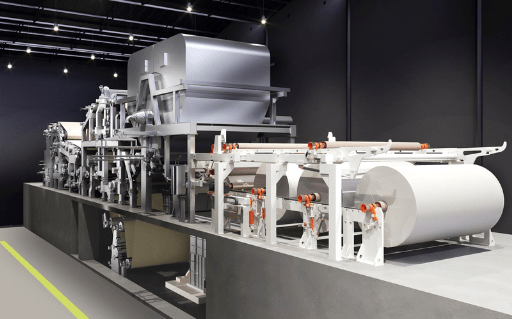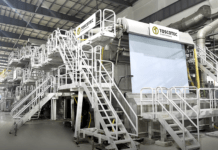Toscotec has launched INGENIA, the tissue machinery supplier’s latest concept machine that produces premium quality structured tissue paper.
The supplier said that the quality generated by the INGENIA line is “substantially higher than textured tissue and close to TAD produced paper, but using 35% less energy”.
It added that the line’s launch is in response to demand for premium quality tissue obtained with lower energy use and lower capital investment than TAD lines, and builds on the R&D of Toscotec and Voith, and field data validation on TAD and structured paper systems.
Paolo Raffaelli, Toscotec Chief Technology Officer, said: “The key factor for energy reduction compared to TAD, is that INGENIA achieves significantly higher dryness through non-thermal dewatering on a structured moulding fabric.
“With TAD, the thermal drying starts from 24-26%, whereas INGENIA achieves a much higher dryness level without using hot air or steam.
“This maintains the premium quality obtained through rush transfer and structured moulding fabric, but uses much less energy.”
Through non-compressive water removal technologies and efficient fibre moulding, he added that INGENIA produces “much higher tissue quality properties than other technologies for textured or conventional DCT tissue”.
“These properties include bulk, softness, stretch, and absorbency, which improve the tactile “hand” feel and the final paper characteristics that compete with premium segments for toilet, facial and towel tissue grades.
“The specific pattern of the structured fabric and the use of a calendar can further enhance the quality of end products.”
Raffaelli added that the new INGENIA offers “top flexibility, as it can easily swing from the production of premium quality structured tissue to conventional DCT”.
It has widths of up to 6m, a production capacity from 100 – 250tpd, and operating speeds up to 1,500m/min in structured tissue mode or 2,000m/min in conventional mode.





























